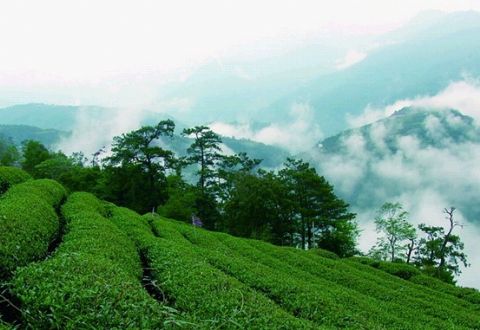What is Alpine Tea
The definition of altitude is a relatively uncontroversial view. However, although heights start from 800 meters or 1400 meters above sea level, in general, they still grow at an elevation of 1000 meters or more. The produced tea is the mainstream consensus. As for the height of Taiwan's existing tea plantations, the ceiling is 2,600 meters above sea level. However, the term "alpine tea" is often applied to the production of high mountains, but the producing areas are not famous, or a few producing areas are less than 1,000 meters above sea level, but they are located in highland valleys and are rich in high-quality tea. Therefore, alpine tea does not specifically refer to tea produced in certain places, but it is a conceptual term relative to plain tea, but it is an indisputable fact that good tea is produced in high mountains.

Why the mountains are good tea
Nature has endowed Taiwan with the natural environment for the cultivation of alpine tea, which is arguably unique. In the area of ​​approximately 36,000 square kilometers of the entire island, the area beyond the 100-meter contour area accounts for 68.7%, and the area of ​​the mountainous area above the 500-meter contour line accounts for about 45.2%. It is really “alpine†everywhere. Taiwan’s alpine tea gardens, on the other hand, are reclaimed from old forest lands and bamboo lands. They have abundant land and abundant organic matter and are suitable for the development of tea plants. If there is sufficient sunshine, the average rainfall area is the best place for planting tea.
Alpine tea distribution
It refers to the tea area that has been gradually opened up since 1980, namely the hemispherical type of tea produced in tea gardens above 1000 meters above sea level (commonly known as oolong tea in the market). Today, the main producing areas are the emerging tea regions with an elevation of 1000 to 1300 meters above sea level in Xinyi Township, Renai Township, Jiayi Fanlu Township, and Chihshang Township, Taiwan Province; and Lishan, Cuifeng, Laoshan, Yushan, Alishan, and Shanshanxi. produce. Because of the cool weather in the mountains, it can be covered by clouds and fog in the morning and at night, and the average daily sunshine is short, which can reduce the bitterness of catechins contained in tea shoots, and increase the tea contained in tea, amino acid and soluble nitrogen, etc. The human body is extremely beneficial; and the alpine tea is spherically curled and green-brown in appearance, and the tea soup brewed is golden brown, with a fresh aroma and full of flavor, a taste of glycol and brewing resistance, making the alpine tea quite vulnerable. Everyone loves it.